Everything you need to know about rose hips
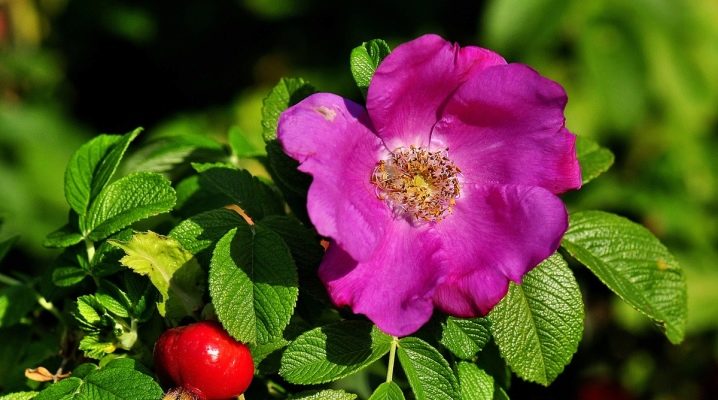
Rosehip is a common wild crop that is fairly easy to grow on your own. The plant can be propagated by seedlings, root layers and seeds.
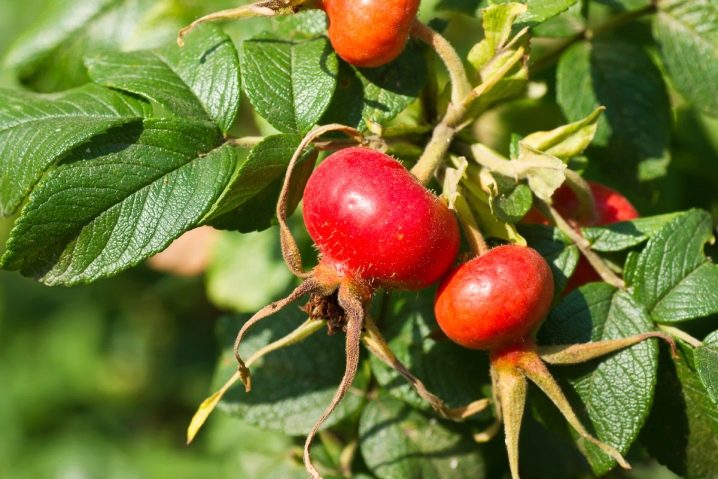
Description
Rosehip is a genus of plants in the Rose family and is often referred to as the "wild rose". There are more than 300 species of this culture and several thousand of its varieties, but the most common is the May rosehip. In general, the dog rose looks like a deciduous shrub formed from erect, climbing or creeping stems. The height or length of the latter can range from 15 centimeters to 10 meters, but on average it is 2-3 meters. The life cycle of a culture lasts about 30-50 years.

The root system of the bush is pivotal, going into the soil to a depth of 5 meters and spreading to the sides by 60-80 centimeters. In a number of varieties, underground shoots come out, and part of the rhizomes is separated from the mother plant. Numerous shoots of the first year are covered with soft and thin thorns, and the next year, straight, curved or hooked spines become more rigid. The branches themselves can be painted in various shades (from dark red to green) and covered with felt fuzz. Some varieties are characterized by the presence of thorns on aerial roots, generative shoots and pedicels.
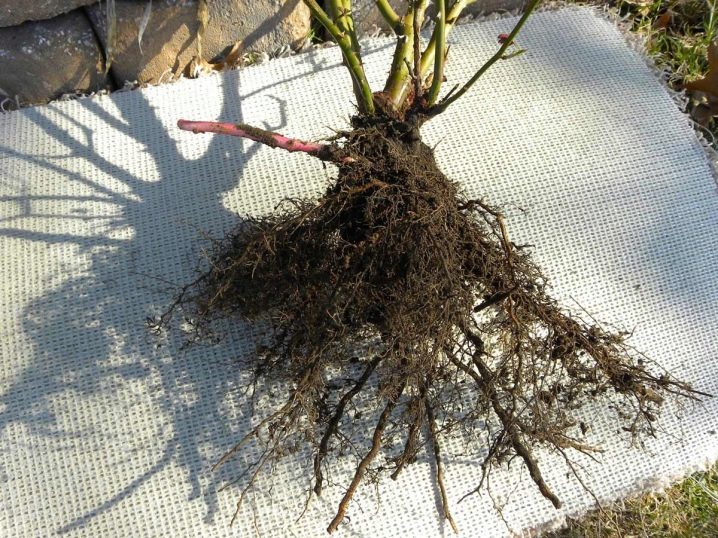
Rosehip buds are reddish, small, glabrous or covered with villi. The leaf blades reach 4-12 cm in length and 1-1.5 cm in width. Their shape can vary from round to elliptical. The color of the rosehip leaves is also varied: green, red or grayish, and the surface is both smooth and wrinkled. The appearance of the leaves largely depends on environmental conditions.
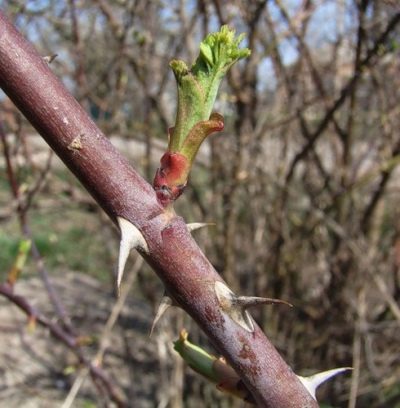
Rosehip blooms from May to June for about 20 days. In most varieties, the buds open in the early morning, at 5-6 o'clock, and close at night. The flower formula contains information that the Rosaceae representative is correct. It has 5 sepals, 5 petals and a large number of pistils with stamens. The diameter of bisexual flowers can range from 1.5 to 10 centimeters. They gather in corymbose or paniculate inflorescences. Most of the varieties have a pleasant sweetish aroma, but there is also a fetid rosehip with an unpleasant amber.
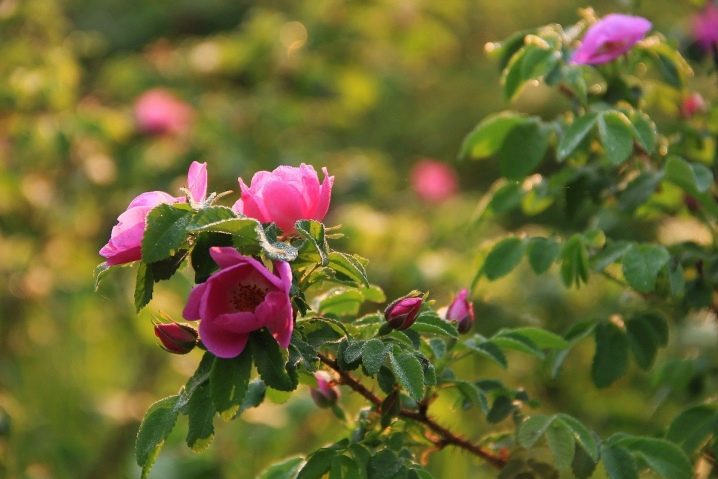
Fruits ripen only in those rose hips, whose age has stepped over the mark of 2-3 years. This stage usually lasts from August to September.
In order for the berry to ripen, it must reach a diameter of 1-1.5 centimeters and acquire a red, orange or black hue. Rose hips can also be covered with bristles or thorns.
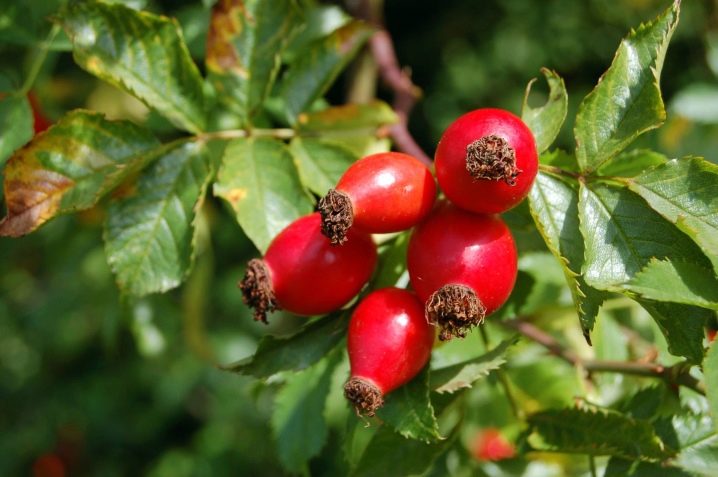
Types and varieties
Today it is customary to divide the genus Rosehip into four subgenera: three of them include no more than 1-2 species, and the fourth, the subgenus Rose, contains about 135 species.
Ordinary
Rosehip is also called dog rose. The shrub, reaching a height of 3 meters, has spreading branches with powerful needles and small leaves. The diameter of the pale pink flowers is 5 centimeters. The bright red, rounded fruit is 2 centimeters long. This species has medium frost resistance, but it is an ideal rootstock for varietal roses.
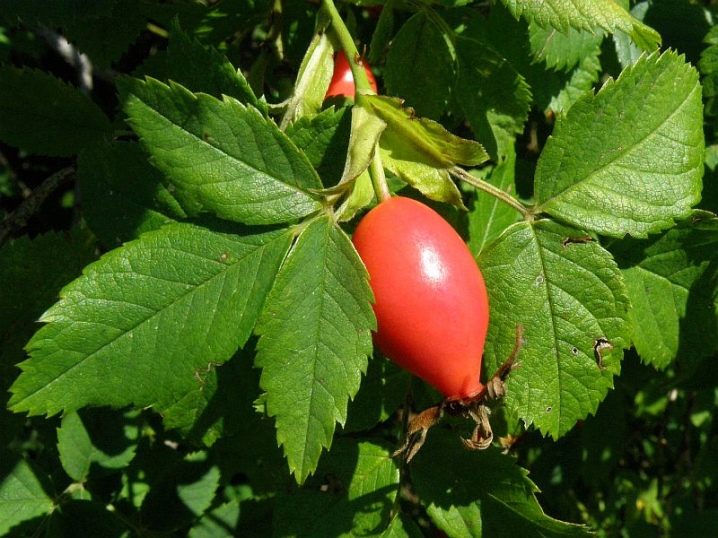
May
May rosehip, also known as cinnamon, is one of the most popular representatives of this culture in Russia. Its bloom lasts from May to June and is accompanied by the appearance of large flowers of pale pink and bright pink shades. The height of the May rose hips ranges from 1 to 3 meters. It is characterized by the appearance of thin paired spines on flower-bearing shoots and small thorns at the base of the trunks.
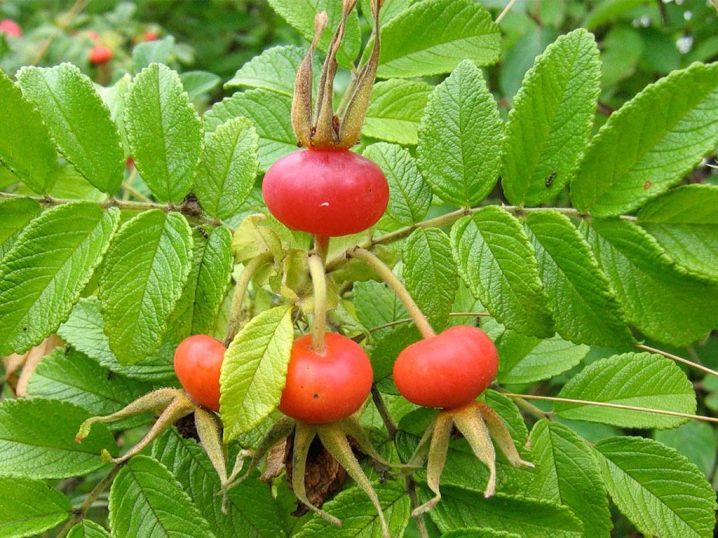
French
Rosehip French forms an upright shrub, the height of which reaches 1.5 m.The length of the leaf blades is 12.5 cm. They are dark green in color, but on the reverse side they have a lighter shade and glandular pubescence. Large flowers either grow singly or form inflorescences of 2-3 buds. Their color ranges from deep pink to bright red. The spherical fruits do not exceed 1.5 cm in diameter. The most popular varieties of French rose hips are Compliment with bright pink buds with white centers, the diameter of which can be up to 10 cm, and Versicolor with spotted flowers.
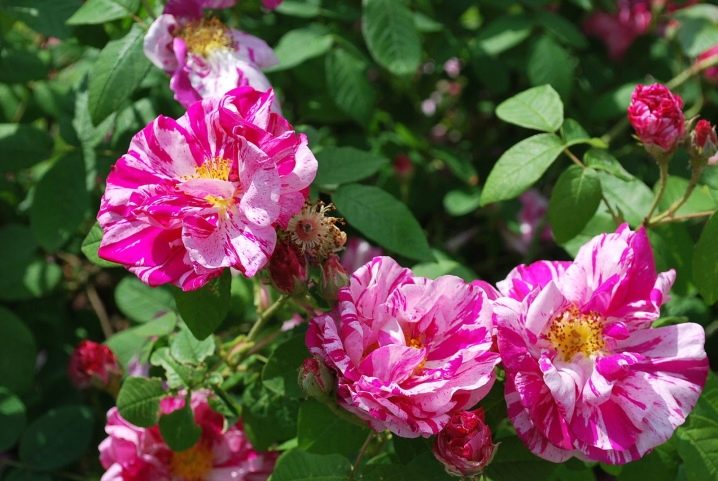
Gray
Gray rosehip, it is also red-leaved dogrose, reaches a height of 2-3 meters. Its shoots are covered with thin, straight or slightly curved needles. On the leaf blades, a bluish bloom with a lilac tint is observed. Flowers grow singly or gather in bright pink inflorescences. Cherry fruits do not exceed 1.5 centimeters in diameter.
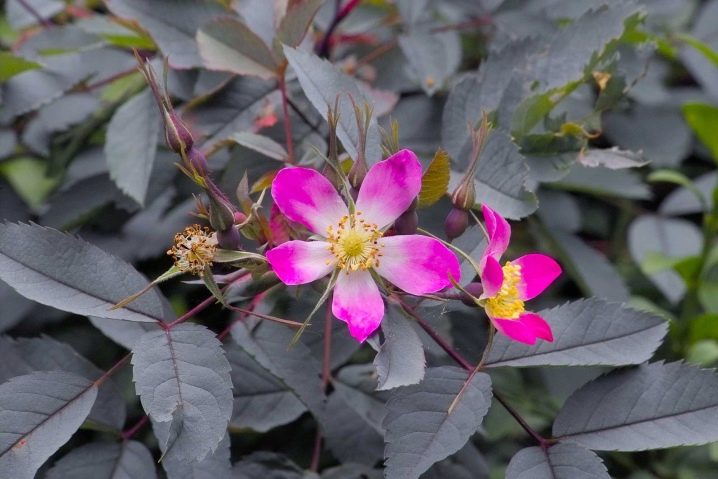
Garden
The garden rose is an ornamental perennial that grows up to 1.5 m in height. Its flowering begins in July, and the fruits ripen by September.
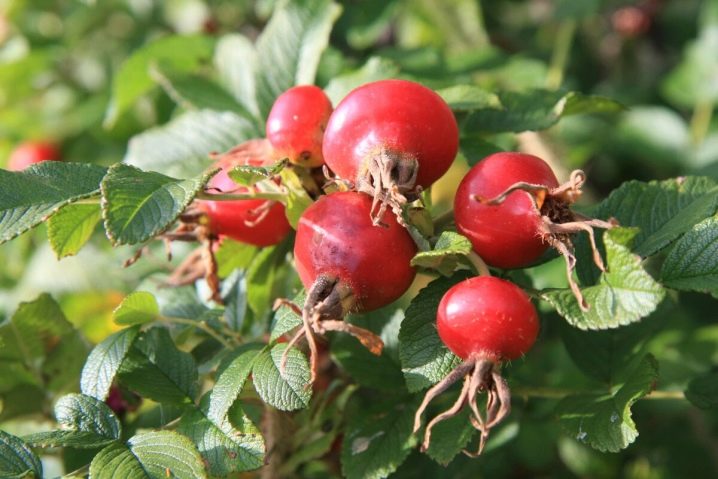
Other
Rosehip alpine, or drooping, does not exceed 1 meter in height. It does not have thorns, but it has large colorful flowers on elongated petioles, withering immediately after the petals fall off. Elongated dark red fruits, covered with glandular bristles, outwardly resemble catkins. Spiny rose is a shrub 1-2 meters high, densely covered with thin thorns and bristles. The flowers of this variety are large, colored either pink or dark pink.

Rosehip rugose can grow up to 2.5 m in height. The leaf blades of the bush are strongly wrinkled, but can also be glossy. In inflorescences, flowers are combined in 3-8 copies. Their diameter can be from 6 to 12 centimeters, and the number of white or pink petals can vary from 5 to 150 pieces. Such varieties of wrinkled rosehip are known as "Pink Grotendorst", "Grootendorst Suprem", "Hansa", "Agnes" and others.
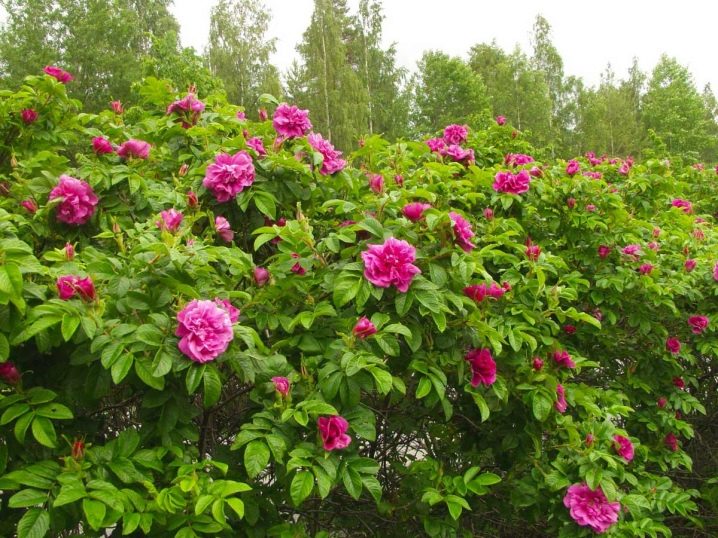
Rusty rose hips are characterized by the presence of red or pink flowers with a diameter of 3 centimeters, scarlet rounded fruits and strong branching.
How to grow at home?
Rosehip is considered an unpretentious crop, and therefore caring for a plant in the open field is not particularly difficult.
A place
For rose hips, it is necessary to choose a well-lit area on a hill. Since the roots of the plant penetrate deeply into the soil, they are not suitable for places with a close occurrence of groundwater, as well as lowlands. The shrub will react poorly to saline or swampy areas.
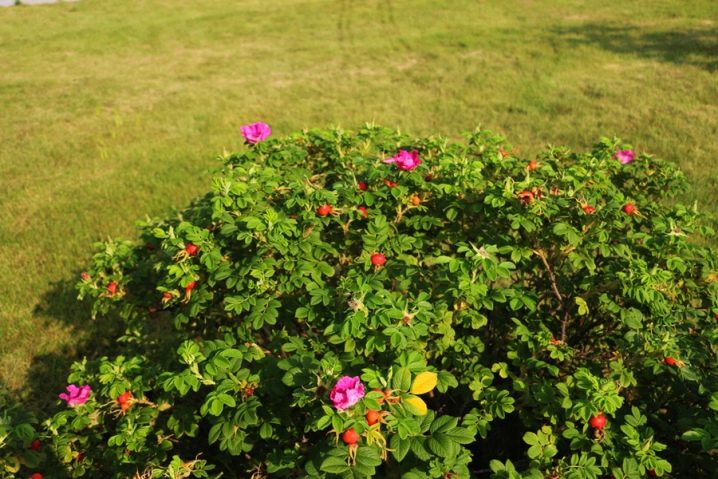
The soil
The shrub is able to develop even on dry and infertile lands, however, it is important to ensure that the site does not turn out to be waterlogged or even swampy. Gray forest soil and black soil are considered optimal for culture. Sour soil is normalized by adding rotted manure or a mixture of compost and mineral fertilizers.

Planting and transplanting
Planting or transplanting a seedling can be done both in spring and autumn. In the first case, you will need to wait for the establishment of warm weather, and in the second - the end of October or the beginning of November. It is recommended to use a one-year or two-year copy.The soil is preliminarily cleared of the roots of weeds and previous crops, and also dug up to a depth of 20 centimeters. For seedlings, holes are dug with sides of 50 centimeters, between which a gap of 2 meters is maintained.

The pits are filled with a mixture of the upper soil layer, 15 kilograms of humus, 250 grams of superphosphate and 50 grams of potassium sulfate. The ground part of the seedlings is shortened to 10 centimeters, and the root shoots are cut off by 20 centimeters.
Before direct immersion in an already irrigated pit, rosehip roots are dipped into a mixture of peat and manure.
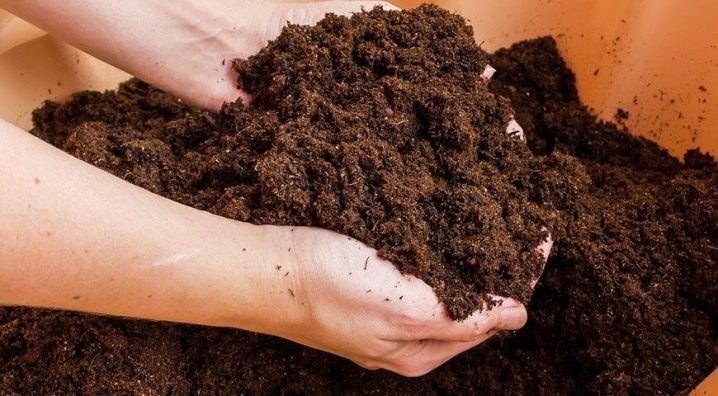
Watering
Rosehip requires moderate irrigation, but most often it has enough moisture accumulated in the soil naturally. Artificial watering is required for the plant only in hot and dry weather. Usually, the dog rose is irrigated no more than 3 times per season, taking into account the pouring of 2 buckets under each bush.
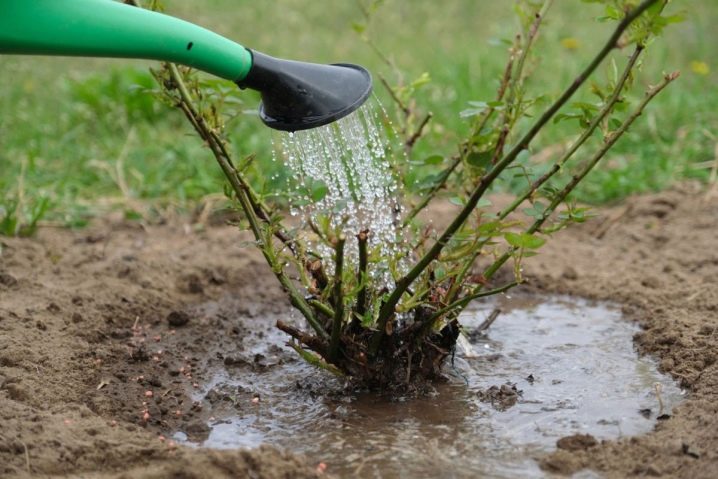
Pruning
Shrub formation is required from the second year of life. At first, it will be enough to cut off only old, dried or damaged branches, and the procedure must be carried out in the fall, after leaf fall. When the rosehip reaches the eighth year of life, then it will already need anti-aging pruning. It is also worth mentioning that the rose hips need nitrogen fertilizers three times a season. The first time they are introduced at the beginning of spring, the second time - in the middle of summer, and the third time - during fruiting, that is, in August.
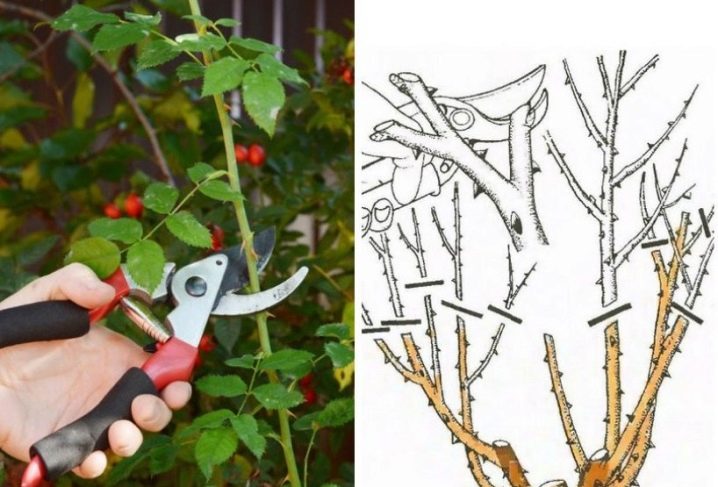
The plant needs organic matter in the form of humus every three years.
Reproduction
The easiest way is to propagate rose hips with seedlings obtained independently through seedlings or purchased in a nursery. Their landing is most effective at the junction of October and November. Reproduction by root layers is considered to be just as fast. For this purpose, a rhizome offspring is carefully separated from a healthy and strong bush with a shovel, which is later transplanted to a new place. Propagation of rose hips by seeds is a very laborious process, but still possible.
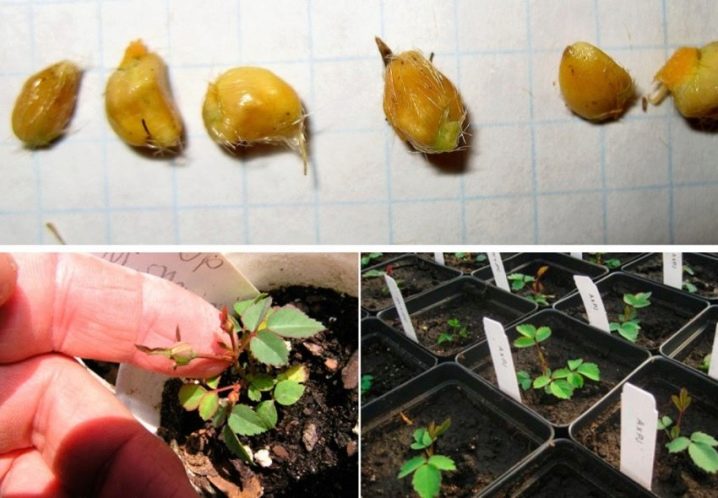
It is better to collect the material yourself at the end of summer, choosing not fully ripe fruits, painted in a brown shade. Sowing seeds is carried out in the middle of autumn, and for the winter the beds are necessarily protected with sawdust. In the spring, immediately after the appearance of the first shoots, it will be necessary to arrange an impromptu greenhouse on the garden bed.
Diseases and pests
The main enemy of the rosehip is the rose fly, which damages the fruit. The fight against the pest is carried out using the BI-58 insecticide. Sawfly larvae make passages in the branches, as a result of which the shoots darken and dry out. From a prick of rose walnut, mossy outgrowths, that is, galls, are formed on the branches. Caterpillars of leaf rollers damage young leaves, and spider mites draw out cell sap. It is impossible to cope with all these insects without pesticides and insecticides.

As a preventive measure, you can dig up the soil near the bushes in the fall.
Of the diseases, rose hips are most often infected with powdery mildew, accompanied by the appearance of white bloom, rust, black spot and chlorosis. It is proposed to fight powdery mildew with a 1% suspension of colloidal sulfur and fungicides. With black spot, the first thing to do is cut off all damaged parts, and dig up the soil with the replacement of the top layer. Copper sulfate or any other copper-containing preparation is responsible for preventing the spread of rust. During the growing season, the shrub can also be treated with a copper-soap mixture. It will be possible to cope with chlorosis by feeding the culture with the missing element.
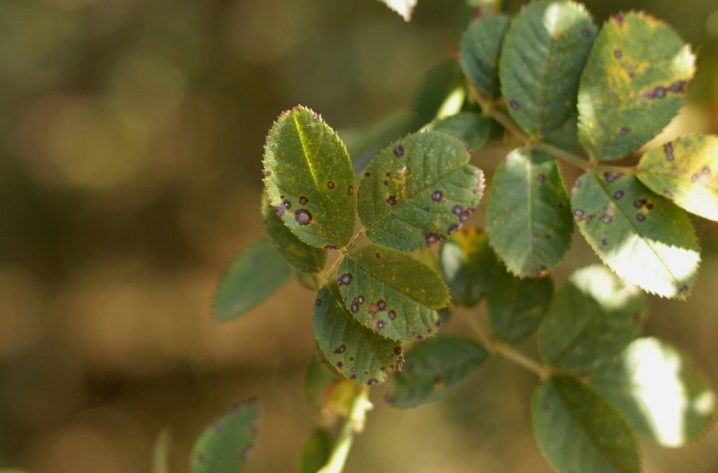
Application in landscape design
Rosehips can be placed both separately on a green lawn and in group plantings with abelia and vervain. It is ideal for creating a hedge, bordering a plot, or covering an unsightly building. The plant is included in landscape compositions in which bushes of different varieties of rose hips play a key role. In a landscape garden, culture is usually combined with geraniums, bells and lavender, and in a rustic garden - with asters and phlox.
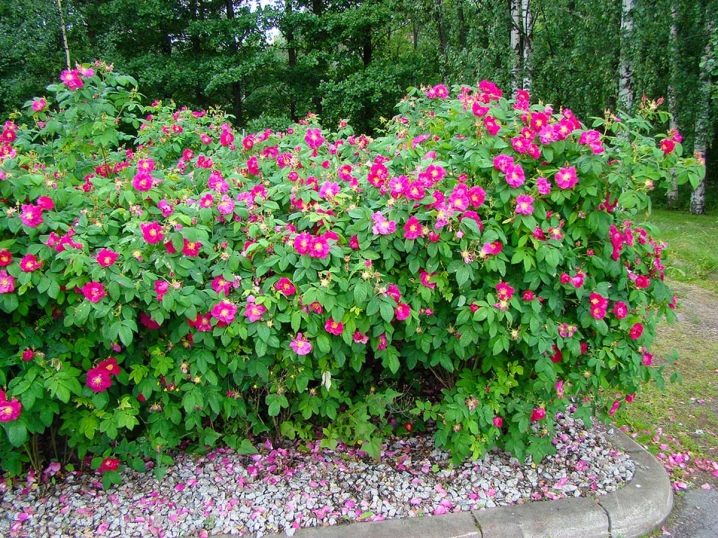































































The comment was sent successfully.